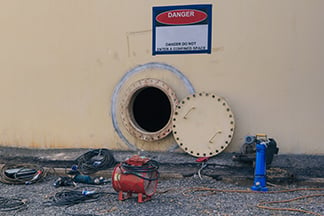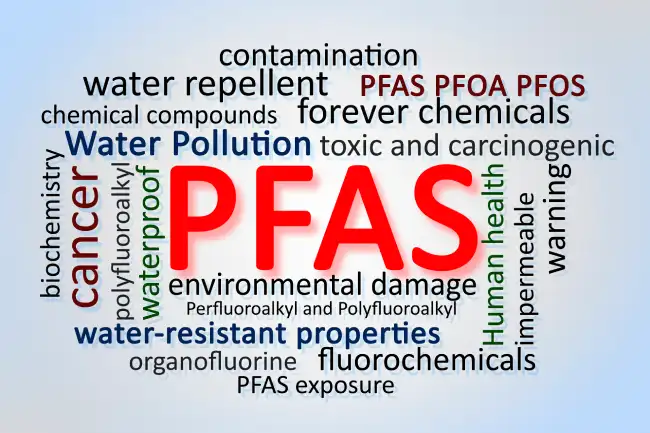The Ins and Outs of Confined Space Entry
Do you have confined spaces at your facility? Are any of them permit-required confined spaces? Do you know your responsibilities under OSHA’s permit-required confined space standard?
Confined spaces are commonly found in workplace settings. Oftentimes, there are aspects of these spaces that pose hazards to the employees who are required to enter them to perform work, triggering the need for action from employers to ensure the safety of employees and contractors.
What is a confined space?
In 29 CFR 1910.146, OSHA defines a confined space as one that:
- Is large enough and so configured that an employee can bodily enter and perform assigned work and
- Has limited or restricted means of entry or exit and
- Is not designed for continuous employee occupancy
All three of these criteria must be met for a space to be considered an OSHA confined space. Examples include tanks, manholes, underground storage, and crawl spaces and confined space safety should be practiced with each.
For a confined space to be considered permit-required, one or more of the following must also be true:
- The space contains or has the potential to contain a hazardous atmosphere (such as flammable gases or combustible dust)
- The space contains a material (such as cement or pellets) that has the potential for engulfing an entrant
- The space has an internal configuration such that an entrant could be trapped or asphyxiated by inwardly converging walls or by a floor that slopes downward and tapers to a smaller cross-section (such as a hopper) or
- The space contains any other recognized serious safety or health hazard (such as falling objects or electrical hazards)
My facility has a few confined spaces that meet the criteria to require a permit. What must be included in the permit so work can be done in those spaces?
Confined space permits must include:
- The space to be entered
- The purpose and date of the entry
- Names of the people who will enter
- Actual and potential hazards
- Acceptable conditions for people to enter
- How to summon for emergency rescue
- How entrants of the space will communicate with attendants outside of the space
- And more!
Remember that a confined space permit must be written, signed, and posted before employees enter the space.
My employees must enter permit-required confined spaces to perform work. How do I keep them safe and in compliance?
If employees are expected to enter permit-required spaces to perform work, a written program and permit system must be developed and followed. Many different elements of the program must be in place and executed properly to ensure employees’ safety and compliance with the OSHA confined space standard, including:
- Proper training for entrants, attendants, and entry supervisors
- Atmospheric monitoring
- Isolation of the space from hazardous energy sources
- Emergency/rescue equipment, personnel, and procedures
- And more!
My facility has permit-required confined spaces, but our employees do not enter them. Is there anything else that I need to do?
Even if employees do not enter permit-required confined spaces at your facility, OSHA still holds you as the employer responsible for informing employees of the existence of the spaces (usually using signage), and preventing employees from entering them.
Additionally, if contractors are hired to perform work inside permit-required confined spaces, the host employer is responsible for coordinating the entry with the contractors, including informing contractors of the permit-required spaces and the requirements for entry, any identified hazards presented by the space or other conditions that make it a permit-required space, and any precautions to be taken or procedures followed when in or near permit-required spaces to ensure confined space safety.
For more details on OSHA’s confined space standard and how to keep your employees protected, view our on-demand webinar “Complying with OSHA's Regulations for Permit-Required Confined Space Entry.” Our experienced consultants can provide guidance on identifying confined spaces, develop your written programs, and provide necessary training to keep your teams safe and in compliance. Contact our experts today.







